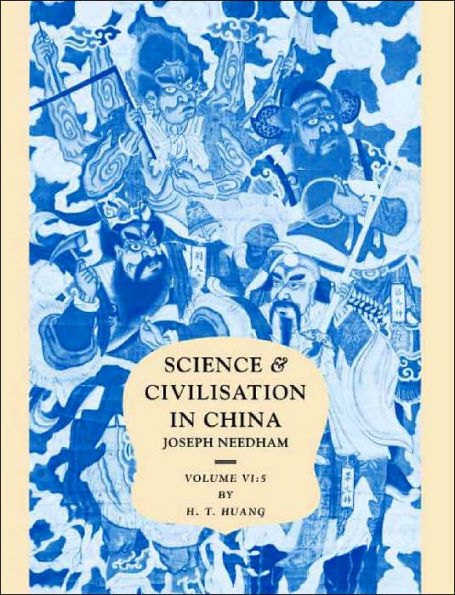Science and Civilisation in China, Part 5, Fermentations and Food Science
Today Chinese cuisine is enjoyed in many parts of the world, yet little is known in the West about the technologies involved in making its characteristic ingredients. H. T. Huang's book is the first history of Chinese food technology in a Western language. It describes the conversion of agricultural commodities into food and drink, and explores the origins, development and scientific basis of traditional Chinese technology as applied to the processing of four food categories: the fermentation of alcoholic drinks from grains; the conversion of soybeans into soyfoods and condiments; the preservation of foods and the production of vegetable oils, malt sugar, starch, etc; and, lastly, the processing and utilization of tea. Where possible the Chinese experience is compared with equivalent systems in the West and elsewhere. The book ends with reflections on how nature, technology and human intervention have shaped the discovery and innovation of processed foods in traditional China.
1142385596
Science and Civilisation in China, Part 5, Fermentations and Food Science
Today Chinese cuisine is enjoyed in many parts of the world, yet little is known in the West about the technologies involved in making its characteristic ingredients. H. T. Huang's book is the first history of Chinese food technology in a Western language. It describes the conversion of agricultural commodities into food and drink, and explores the origins, development and scientific basis of traditional Chinese technology as applied to the processing of four food categories: the fermentation of alcoholic drinks from grains; the conversion of soybeans into soyfoods and condiments; the preservation of foods and the production of vegetable oils, malt sugar, starch, etc; and, lastly, the processing and utilization of tea. Where possible the Chinese experience is compared with equivalent systems in the West and elsewhere. The book ends with reflections on how nature, technology and human intervention have shaped the discovery and innovation of processed foods in traditional China.
341.0
In Stock
5
1

Science and Civilisation in China, Part 5, Fermentations and Food Science
769
Science and Civilisation in China, Part 5, Fermentations and Food Science
769Hardcover(New Edition)
$341.00
341.0
In Stock

Product Details
| ISBN-13: | 9780521652704 |
|---|---|
| Publisher: | Cambridge University Press |
| Publication date: | 11/30/2000 |
| Series: | Science and Civilisation in China , #5 |
| Edition description: | New Edition |
| Pages: | 769 |
| Product dimensions: | 7.80(w) x 10.00(h) x 1.97(d) |
From the B&N Reads Blog
